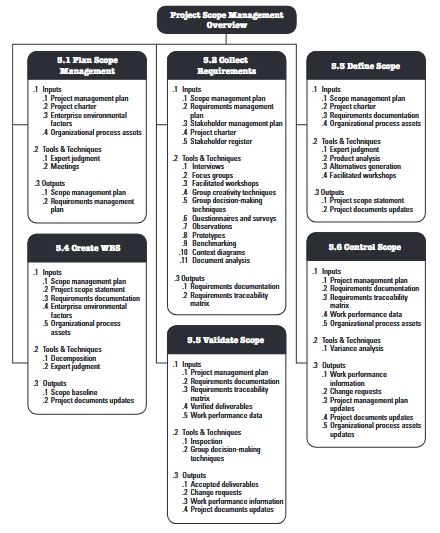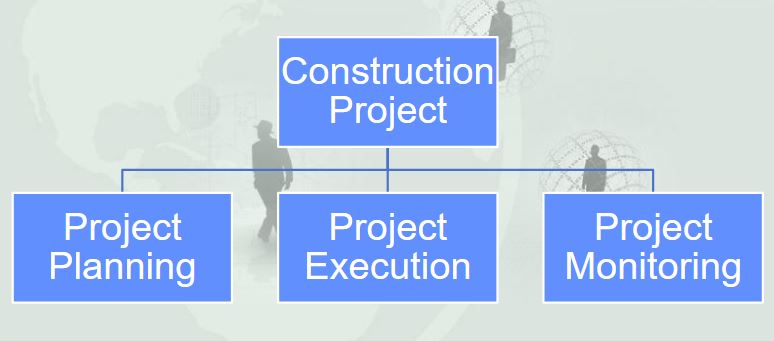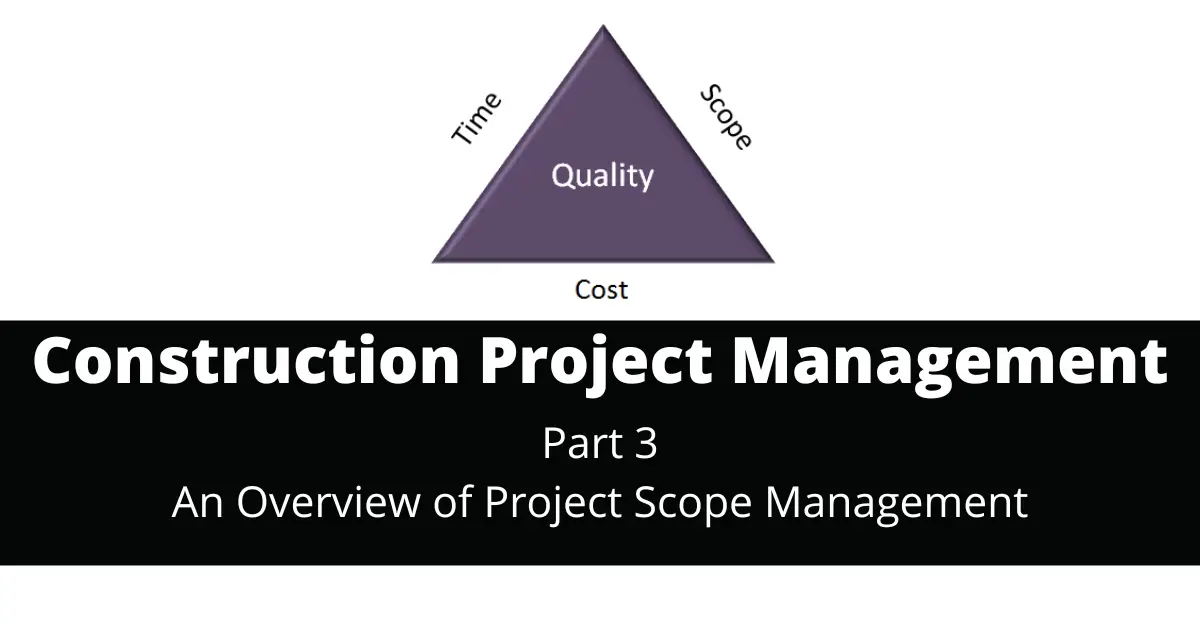Project scope management encompasses the activities necessary to guarantee that the project includes all of the work necessary to effectively complete the project and only the work necessary.
It is largely focused with identifying and regulating what components of the project are included and excluded.
Related: What is Project Management
Table of Contents
The expanded objectives of Scope Management
- Find out what it means to manage customer expectations.
- Describe the conditions of the satisfaction development process.
- The creation of a paper outlining the requirements of satisfaction.
- Recognizing the significance of sustaining conditions of satisfaction throughout the project’s life cycle.
- Define the essential components and functions of the Project Overview Statement.
- Create a scalable Project Overview Statement (POS) for your project idea in your company’s language.
The following are the primary project scope management processes:
- Plan Scope Management: the process of developing a scope management plan that details the process for defining, validating, and controlling the project’s and product’s scope.
- Collect Requirements (Initiation and Scope Planning): Make the company agree to move forward with the project’s next phase.
- Define the Scope: draft a documented scope statement that will serve as the basis for future project decisions.
- Create a work breakdown structure (WBS): dividing the key project deliverables into smaller, more manageable components.
- Scope Verification: the process of formally accepting the project’s scope.
- Controlling Scope Changes: managing changes to the project’s scope.

Primary Project Scope Management Processes
These processes are inextricably linked to one another and to processes in other domains of knowledge. Each procedure may require the assistance of one or more individuals or groups of personnel, depending on the project’s requirements. Generally, each procedure occurs at least once during each phase of a project.
While the processes are shown here as separate parts with well-defined interfaces, they may overlap and interact in ways that aren’t shown here.
The phrase “scope” can apply to a variety of things in a project environment, including the following:
The scope of a product or service refers to the features and services that will be included. This refers to the structure, road, etc.
The scope of a project refers to the effort required to provide a product with the stated features and functions. This is how the construction process works.
The focus is on the methods, tools, and techniques used to manage project scope.
Product scope management processes, tools, and techniques vary depending on the type of application. They are often part of a project’s life cycle and can be set out in the project plan.
While a project is composed of a single product, that product may contain subsidiary components, each having its own distinct but interconnected product scope. As an example, there are usually four parts to a new telephone system: hardware, software, and training. They all work together to make the system work.
While product scope completion is measured against specifications, project scope completion is measured against the plan. Both methods of scope management must work together to make sure that the project’s work results in the delivery of the product that was set out in the plan.
Plan Scope Management (Planning Process Group)
Plan Scope Management is the process of making a scope management plan that lays out the steps for defining, validating, and controlling the scope of a project or product.
The main benefit of this method is that it gives you rules and rules for managing scope throughout the project.
This operation is carried out only once or at predetermined intervals.
The process of developing the scope management plan and detailing the project scope begins with a study of the data included in the project charter, the most recently approved subsidiary plans of the project management plan, and historical data contained in OPA and EEF.
Collect Requirements (Planning Process Group)
- The majority of information pertaining to construction will be derived from the contract.
- Following that, the construction company will provide information. Among these are:
- Quality management according to ISO or a similar standard
- Procedures for occupational health and safety: a component of risk management
- BSR or HSR data, estimations, or minimum order quantities, and so on.
- Particulars of construction
- Specifications
- Manuals of construction management: ICTAD’s book on construction management.
- Consultation with the client
- Additionally, these stimuli may be referred to as issues, opportunities, or business requirements.
- The common thread running through all of these words is that management must generally decide how to respond.
- Collect Requirements is the process of determining, documenting, and managing stakeholder needs and requirements to meet objectives.
- The key benefit of this process is that it provides the basis for defining the product scope and project scope.
- This process is performed once or at predefined points.
- The project’s success is directly influenced by active stakeholder involvement in the discovery and decomposition of needs into project and product requirements.
- Requirements include conditions or capabilities that are required to be present in a product to satisfy an agreement and business needs.
- Requirements need to be asked for, analyzed, and recorded in enough detail so that they can be included in the scope baseline and measured when the project starts.
- Requirements become the foundation of the WBS cost, schedule, quality planning, and procurement.
Define Scope (Planning Process Group)
Define Scope is the process of creating an in-depth description of the project and its deliverables.
Scope Definition is the process of creating a written scope statement that serves as the foundation for future project choices, most notably the criteria used to decide if a project or phase has been successfully completed.
The primary benefit of this process is that it establishes the boundaries and acceptability standards for the product, service, or result.
Given the possibility that not all requirements stated in Collect Requirements would be incorporated in the project,
The Define Scope phase identifies the project’s final needs from the requirements documentation created during the Collect Requirements step.
Create a clear description of the project and its associated product, service, or outcome.
The development of a formal project scope statement builds on the primary deliverables, assumptions, and limitations identified during the project’s inception.
The process of defining scope can be extremely iterative. Iterative life cycle projects start with a high-level vision for the overall project, but the detailed scope is established iteratively.
Create WBS (Planning Process Group)
A work breakdown structure (WBS) is a way to break down project deliverables and work into smaller, more manageable parts.
The work breakdown structure (WBS) is a hierarchical breakdown of the work that the project team will do to meet the project goals and produce the needed deliverables. Each lower level of the WBS shows a more detailed description of the project activity.
As an example, a construction project can be initially broken down into a few stages as follows. However, thereafter, each stage gets divided further.

Verify Scope (Monitor and Controlling Process Group)
The process of formalizing acceptance of completed project deliverables is known as verification of scope.
Verifying scope entails evaluating deliverables with the customer or sponsor to ensure that they are finished satisfactorily and gaining official acceptance from the customer or sponsor.
The acceptability of the deliverables is of primary importance.
Quality control is primarily concerned with ensuring that the deliverables are correct and that they meet the quality requirements stated for the deliverables.
Control Scope (Monitor and Controlling Process Group)
Control scope is the practice of monitoring the state of the project and product scope as well as controlling changes to the scope baseline.
To make sure that all changes and proposed corrective or preventative measures go through the Perform Integrated Change Control process, you need to control the project scope.
Controlling the scope of a project is also used to manage actual changes as they happen and is integrated with the other control processes.
Changes that are uncontrollable are commonly referred to as “project scope creep.” Because change is unavoidable, some form of change management approach is required.
Read also: What is Site Organization?











